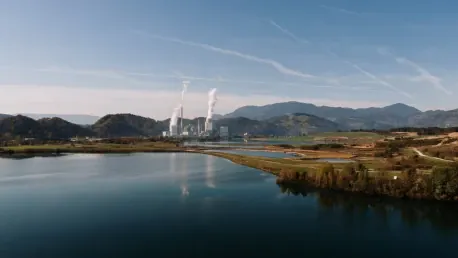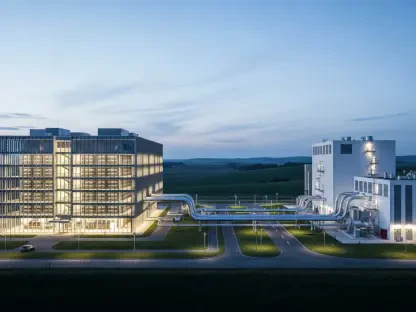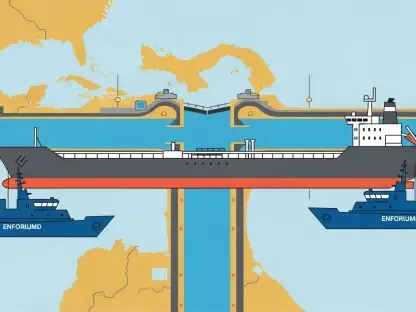Christopher Hailstone has extensive experience with energy management, renewable energy, and electricity delivery. He is also a Utilities expert, providing valuable insights on grid reliability and security. Today, he shares his thoughts on the future of geothermal energy and the factors driving its growth.
You mentioned that it’s going to be the “decade of geothermal.” Can you elaborate on why you believe this?
Geothermal energy is gaining momentum due to several key developments. Firstly, advancements in drilling technology have significantly reduced costs and improved efficiency. This makes tapping into subterranean heat more viable. Secondly, political and industry support, particularly from administrations that encourage drilling practices, has led to increased investment in geothermal projects. Unlike other renewable energy forms, geothermal provides consistent power generation, making it an attractive option for stabilizing the grid.
The article notes that Trump’s administration has been unexpectedly supportive of geothermal energy. Why do you think this is?
Trump’s administration has supported geothermal energy largely due to its compatibility with existing drilling technologies from the oil and gas sector. Policies that encourage drilling and energy independence naturally favor geothermal energy development. Specific actions include funding initiatives aimed at research and development in geothermal technologies. This support has boosted investor confidence, leading to significant financial backing for geothermal projects.
Geothermal energy currently lags behind wind and solar by “10 to 15 years.” What are the main challenges in accelerating geothermal energy development?
The main challenges include the high upfront costs of drilling and the technical difficulties of accessing deep underground heat sources. Innovations like enhanced geothermal systems (EGS) and hydraulic fracturing must be further refined to overcome these hurdles. Utilizing the oil and gas industry’s expertise in drilling can help accelerate the development process, integrating advanced techniques to make geothermal energy more accessible and cost-effective.
Drew Nelson mentioned that the U.S. is highly efficient at drilling. Can you explain how this expertise benefits geothermal energy development?
The U.S. has developed sophisticated drilling techniques in the oil and gas industry that can be directly applied to geothermal energy projects. Techniques like directional drilling and hydraulic fracturing allow for more precise and efficient access to geothermal reservoirs. Economically, using established methods reduces costs and speeds up project timelines, making geothermal energy more competitive with other renewable sources.
Geothermal energy is primarily developed in places where natural heat escapes to the surface. What potential does the U.S. have for developing geothermal energy in locations without these geological anomalies?
The U.S. has significant potential to develop geothermal energy in areas without obvious surface heat sources, thanks to advancements in deep drilling technologies. Techniques like hydraulic fracturing and EGS can access heat from deeper layers of the Earth’s crust. Current projects, such as those in Nevada and California, are exploring these methods, indicating promising progress in expanding geothermal energy beyond traditional hotspots.
Alex Kania mentioned advanced geothermal technologies. Can you briefly explain what advanced geothermal technologies are?
Advanced geothermal technologies, such as EGS, differ from traditional methods by enabling energy production in areas without natural geothermal surface manifestations. These systems use artificial stimulation techniques to create permeable zones within deep rocks, enhancing the heat extraction process. These technologies offer greater reliability and efficiency by expanding the range of viable locations for geothermal energy production.
Unlike wind and solar, geothermal energy is a baseload energy source. How does this benefit the overall energy grid?
Baseload energy sources like geothermal provide continuous power, which is crucial for grid stability. Unlike wind and solar, which are variable and dependent on weather conditions, geothermal energy can consistently supply power around the clock. This reliability helps mitigate the challenges posed by intermittent renewable sources, reducing the need for extensive energy storage solutions and ensuring steady electricity prices.
What role do bipartisan support and political backing play in the growth of geothermal energy?
Bipartisan support is vital for the growth of geothermal energy, as consistent backing across administrations encourages long-term investment. Previous and current administrations have supported geothermal through research grants, tax incentives, and legislation promoting renewable energy development. These initiatives have driven recent investments and are essential for maintaining momentum in the geothermal sector.
Geothermal energy has started to attract significant investment. Can you discuss some of the recent investments and their impact?
Recent investments in geothermal energy have been substantial, with funding directed towards enhancing drilling technologies and exploring new project locations. Projections for geothermal energy output by 2050 suggest significant growth, potentially providing around 90 gigawatts of carbon-free energy, enough to power millions of homes. These investments are pivotal for scaling up geothermal capacity, reducing reliance on fossil fuels, and achieving national energy and climate goals.
Do you have any advice for our readers?
Stay informed and engaged with renewable energy developments, particularly geothermal. Supporting policies and initiatives that promote clean energy can drive further investment and innovation in the sector. Also, consider how diversified energy sources like geothermal can contribute to a more stable and sustainable energy future.









